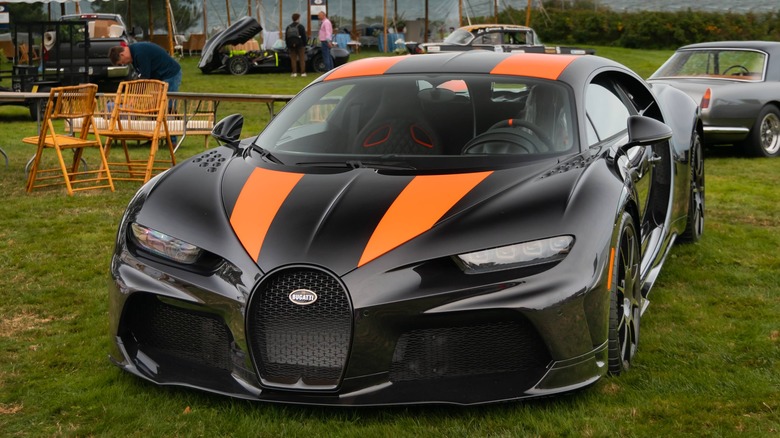
Ethan Yetman/Shutterstock
Almost everyone has heard of the term horsepower, but that doesn’t mean they know exactly what it signifies. After all, we’ve all seen cars being advertised regarding the number of horsepower the vehicle can produce. Whether it’s an electric car or a racer with a huge engine, each vehicle comes with an indication of how powerful it is; although it isn’t always clear what this number means and how much attention you actually have to pay to it when looking at cars.
Perhaps surprisingly, horsepower has been around for some time and has a long history. As the name suggests, it was largely based on a comparison with the amount of work a common horse could do. That’s because horses powered most heavy-duty machinery that needed to be moved around and vehicles designed to replace them needed some sort of comparison. Yet, that doesn’t make horsepower a perfect measurement, and one horsepower doesn’t necessarily equal the amount of work that a single horse can do.
Here, we will explore the history of horsepower and gain a better understanding of how it is calculated and what it really means for you and your vehicles.
What was used before horsepower?
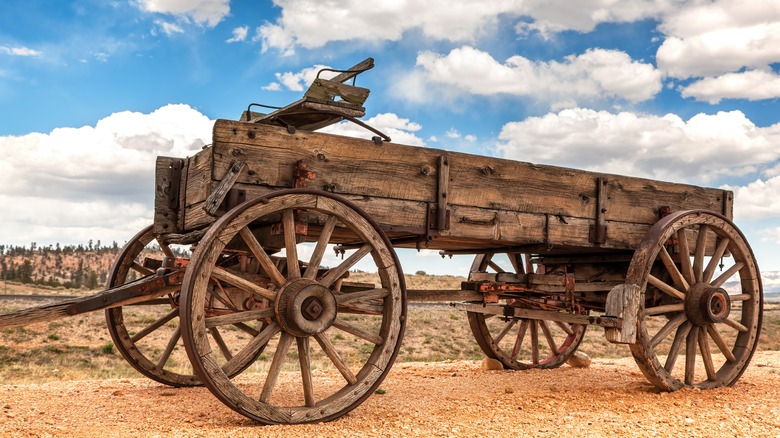
Jane Rix/Shutterstock
Humans have been using machines to help make life easier and more efficient since ancient times. The six simple machines – inclined plane, lever, wedge, wheel and axle, pulley, and screw — form the basis of all machinery that subsequently has been developed. Many of these were invented thousands of years ago, even before the time of Ancient Egypt and other famous civilizations that pre-date modern humanity.
Modern units of measurement used to determine the amount of force and energy involved in every action are relatively recent inventions. In ancient times, those investigating the sciences and mathematics did so using formulas rather than set units. In fact, many SI units are named after important figures from history who worked on vital scientific principles, such as Isaac Newton and James Watt. Meanwhile, some civilizations did have units for measuring things like weight, with the Ancient Egyptians using debens. However, a need for set units to measure power wasn’t really needed until machines started to replace horses and human power.
History of horsepower as a measurement
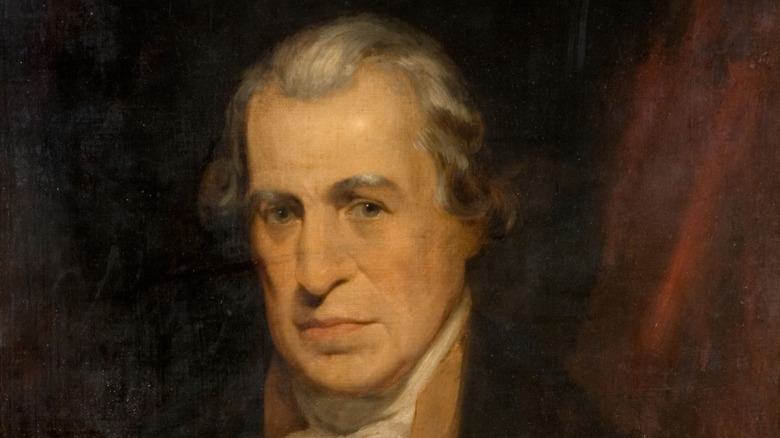
Heritage Images/Getty Images
The need to accurately measure power and determine how much work a machine was capable of doing came about as a result of the development of the steam engine. James Watt, a Scottish inventor who had improved upon the less efficient Newcomen steam engines with one of his own designs, saw that the best way to sell his new machine was to make it clear exactly how much better it was than traditional methods of powering machines or as transport to move goods.
At the time, horses were the backbone of industry around the world. They were widely used to do everything from plowing fields to moving coal out of a mine. When Watt first suggested to miners and farmers that his steam engine would be a good purchase, he was consistently asked about how many horses the steam engine would replace. Understanding that this provided the best baseline to compare his invention with, Watt came up with a calculation to measure the work a horse could do and then termed the unit of horsepower to make it easy to understand.
With horsepower, Watt could effectively and clearly explain the benefits of his steam engines to potential customers. After all, if he could say that a steam engine could do the work of twenty horses and back it up with science, it would make for a very attractive proposition. The plan worked, and Watt sold many versions of his invention, kickstarting the Industrial Revolution.
What does horsepower actually mean?
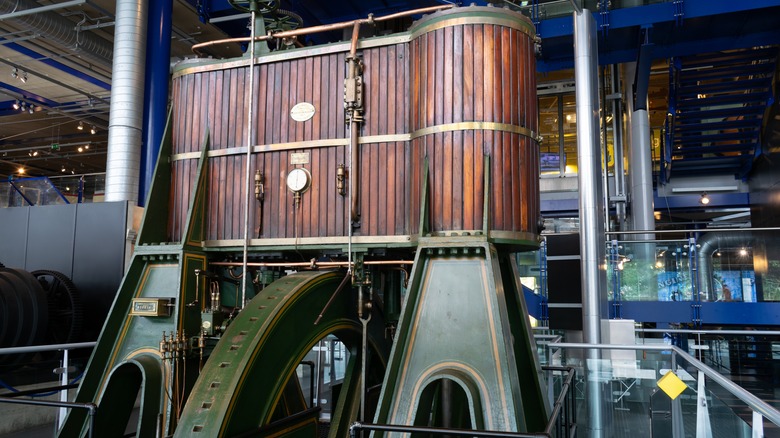
John B Hewitt/Shutterstock
Horsepower is simply a measure of power, which itself is a measurement of the rate at which work is done. Essentially, it is the way of determining how much energy is transferred in a set period of time. It is calculated by dividing the amount of work done by the time taken to do it. In the case of James Watt, he studied the amount of work that a horse was able to do in an hour and then attempted to accurately portray this in a way that was easy to understand.
Watt observed horses working in a variety of conditions, and eventually came to the conclusion that they were able to perform 33,000 foot-pounds of work in a single minute. This is roughly equivalent to a horse being able to pull a weight of 330 pounds along 100 feet or a horse pushing a mill wheel fully around 144 times by exerting a force of 180 pounds. By using the calculation for power, Watt determined that a single horse was able to produce 32,572 foot-pounds per minute, which he then rounded to 33,000 foot-pounds per minute for simplicity.
So, a steam engine that is able to do 33,000 foot-pounds of work each minute is said to have one horsepower. The unit soon caught on, and was used to work out how powerful each engine was in comparison to the output of a horse.
How horsepower is actually calculated

Zu_09/Getty Images
Around the world, the International System of Units dictates that the standard unit of power is the watt – which was actually named in honor of James Watt. This is equal to one joule of work per second, and one horsepower is roughly equal to around 746 watts. This makes it much easier to work out horsepower than the old method of having to convert everything into feet, pounds, and minutes, as you can simply convert watts into horsepower by multiplying the number of watts by 0.00134102.
It is also possible to calculate the horsepower of an engine based on its torque and revolutions per minute, which measure the rate of change of angular momentum and the rotational speed, respectively. Using these values, which can often be found in car manuals, it is possible to calculate the exact horsepower of a vehicle using the formula Horsepower = Torque x RPM / 5,252.
With modern cars and other vehicles, manufacturers tend to rely on a dynamometer to determine how much horsepower a car has. This allows the car’s wheels to spin on a special treadmill-like device that measures its weight and speed while computers convert those numbers into torque values and horsepower.
A horse can produce much more than one horsepower

Georgeclerk/Getty Images
Contrary to what the name suggests and James Watts’ own calculations, a horse doesn’t necessarily produce a single horsepower. The engineer did not use precise measurements for much of his work, and instead relied on estimates and best guesses for the majority of his calculations. Throw in the fact that he was also taking the average work of a horse across an entire day, rather than their absolute peak performance, and it isn’t actually all that surprising that a horse can actually work harder than is indicated by the horsepower measurement.
What might be shocking, though, is how much horsepower a horse is capable of producing. A 2023 study that used a dynamometer to accurately measure the work done by horses found that the animal’s work measured at 5.7 horsepower. Other experiments have concluded that horses can reach a peak performance of 15 horsepower for a short amount of time, although a horse will generally output less than a single horsepower over a longer period. That’s simply because any living creature cannot operate at its maximum effort for a substantial amount of time due to fatigue and energy expenditure.
Humans can produce between 1 and 3 horsepower

Salty View/Shutterstock
While horses are capable of producing much more than a single horsepower, humans can also be surprisingly powerful. This can be measured by determining the work done on human-powered equipment such as bicycles, or by examining the amount of work done by a person in a set amount of time. Doing so reveals that men and women are quite capable of exceeding 1 horsepower, even if that isn’t a figure they can keep up for a long time.
In general, a healthy person has around a tenth of the power of a horse, around 0.1 horsepower. That means it would take ten humans to match a horse under normal circumstances in terms of power. However, humans can maintain around 1 to 2 horsepower for a few seconds, and elite athletes can exceed this by a significant margin. For example, scientists worked out that Jamaican sprinter and world record holder Usain Bolt had a maximum power of 2619.5 watts during his 9.58-second 100-meter sprint, which works out to 3.5 horsepower.
Why we still use horsepower as a measurement
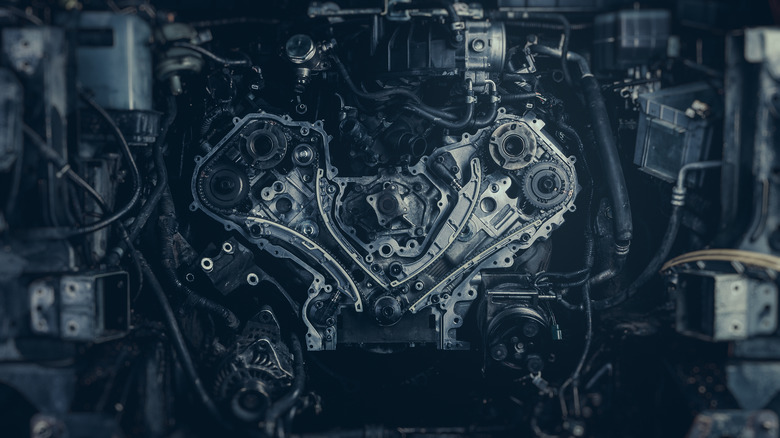
Da-kuk/Getty Images
Nowadays, horses are not a common way of providing power or carrying out work. This makes a comparison to the amount of work a horse is capable of doing far less meaningful, as most people today have almost no idea of what that would actually mean. Yet we persist in using horsepower as a way of measuring the power of all kinds of vehicles and engines. Even more importantly, we now know that horses can exert more than one horsepower, making the use of horsepower as a measurement even more baffling.
The exact reason why horsepower has stuck around is unclear. Linguistics expert Eric Lacey of the University of Winchester told Live Science it would be «the holy grail of linguistics» if it were possible to predict which terms would stand the test of time. However, the importance of horses during the 19th century and the fact that the term came around at a time of major change and upheaval likely helped ingrain it in people’s minds.
«Against this backdrop, we can see how a [culturally significant] word like ‘horsepower’ survived,» Lacey explained further. «If horses hadn’t been the most obvious sources of industrial energy in the early 19th century, it’s doubtful the term would have been as popular, but the fact that a single word could both convey the desired redundancy of the old and simultaneously usher in the new meant it ended up at the forefront of everybody’s minds.»
Alternatives to horsepower
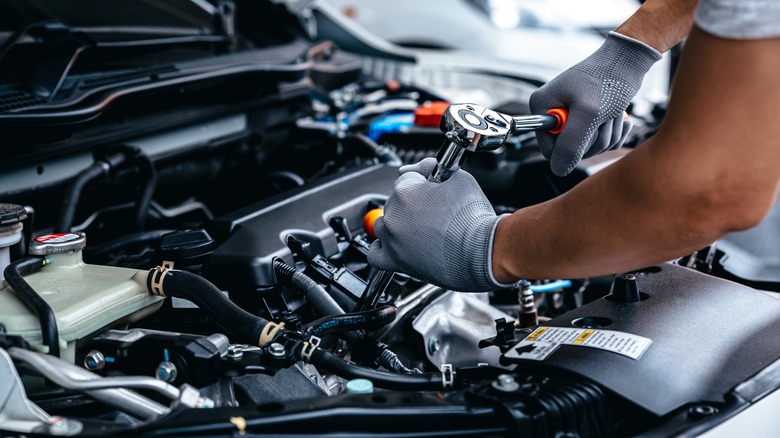
Thx4Stock team/Shutterstock
There are some alternatives to horsepower as a unit of measurement when it comes to power. By far the most widely used is the watt, the International System of Units (SI) standard unit of power. In fact, many manufacturers list the power of their cars in kilowatts in addition to horsepower, and the unit is much easier to work with. Other lesser-known ways of measuring power include ergs per second – which are often used in astrophysics – and calories per hour, although neither has become as widespread as horsepower or the watt.
There are some suggestions that a better way of expressing power would be to rebrand the term horsepower to humanpower, as most people are far more familiar with the amount of work that a person could do in a set amount of time. After all, most individuals have very little experience of horses in today’s society. University of Winchester linguistics professor Eric Lacey feels like the term humanpower would be a more fitting and useful way of measuring power. Speaking to Live Science, the expert said, «As a linguist, I’d be very happy with that! It would be a neat example of a word actually telling people what it did and would be more meaningful as a unit of measurement.»
What horsepower means in terms of your car
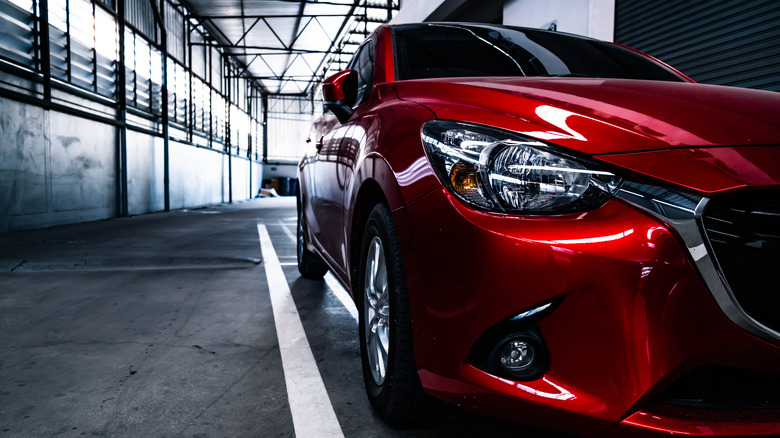
OATZ Animation/Shutterstock
Even if you know that horsepower is a measurement of power, it is not immediately clear what exactly that means for drivers. There are two main measurements that manufacturers and dealers use to give customers an idea about how fast and powerful a car is – torque and horsepower. Torque is a measure of how much force a car can produce, while horsepower tells you how quickly it can produce that force.
In simpler terms, torque is an instantaneous measure of force, with a higher level of torque meaning that a car will accelerate more quickly. Meanwhile, horsepower measures how that force is applied over time, and a higher horsepower will generally mean that a vehicle will be able to reach a higher top speed.
Of course, a car rated at higher horsepower might not always be faster than one with lower horsepower. That’s because the work done to move the car depends on a variety of factors, including the weight of the vehicle. A heavier car will need more force, and therefore higher horsepower, to move it at the same speed as a car that is lighter.
Cars with the most horsepower

phjahn/Shutterstock
Now that you know exactly what horsepower means for cars, you can have a better appreciation for those vehicles with the highest horsepower. High-performance vehicles and sports cars may not always have the absolute highest horsepower of any car on the road. However, they will almost certainly have a significantly higher horsepower-to-weight ratio. That’s because a car that is light and agile doesn’t need as much horsepower to go as fast as a car that is heavier. So the fastest cars are usually created with a combination of high torque and horsepower, in addition to weight-saving measures.
There are a number of cars that have incredibly high horsepower ratings. Many of them are high-end and superfast production cars that can reach staggering top speeds, like the Rimac Nevera, SSC Tuatara, and Dodge Challenger SRT Demon. However, there are also some unique vehicles that are in a league of their own. The Bugatti Chiron SuperSport 300+, for example, has almost 1,600 horsepower and can reach a top speed of 304.773 mph, while the Hennessey Venom F5 has 1,817 horsepower and can travel at over 300 mph.
Other machines that use horsepower as a measure of power
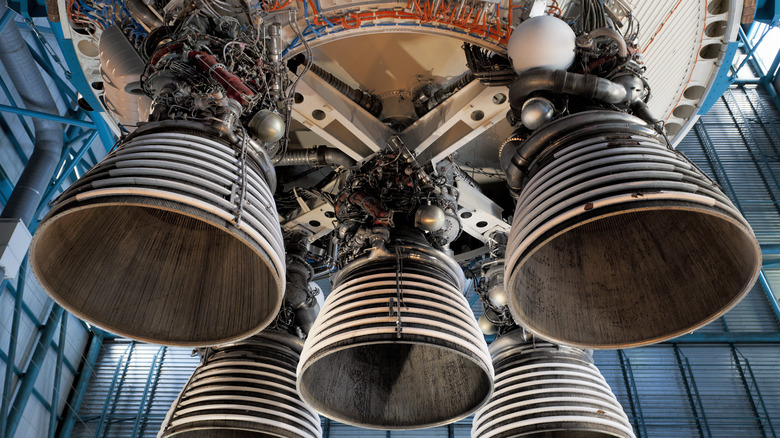
Pidjoe/Getty Images
It is not just cars that have powerful engines. In fact, many other types of vehicles have engines that are much more powerful than anything you’d find in a production car that you can drive on the road. The M1 Abrams tank, widely regarded as one of the best tanks of all time, has a turbine engine that can output 1,500 horsepower so it can reach speeds of up to 45 mph despite weighing more than 50 tons. Monster trucks can also have engines that are capable of generating 1,500 horsepower, allowing them to traverse different terrain and perform stunts.
Even these engines, though, are tiny compared to the largest engines ever built. The Wärtsilä-Sulzer RTA96-C is a two-stroke turbocharged diesel engine that powers container ships that can weigh as much as 200,000 tons. The engine itself is 2,300 tons and almost 100 feet long, with the huge machine generating 107,390 horsepower. More impressive were the engines powering the super-heavy-lift launch vehicle known as the Saturn V. At maximum power, the thrust produced by the rocket was 3.4 million kg, which is equivalent to more than 160 million horsepower.